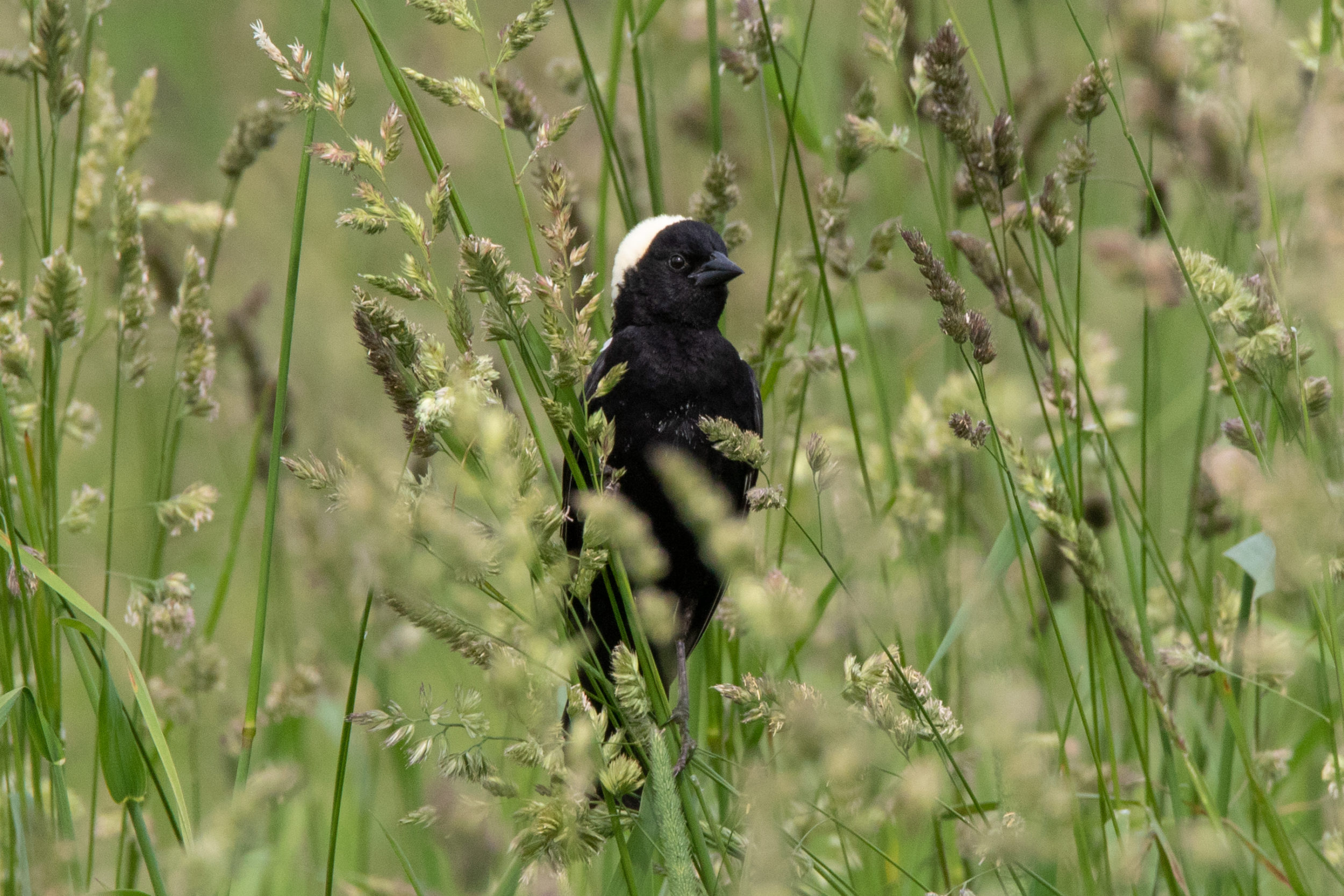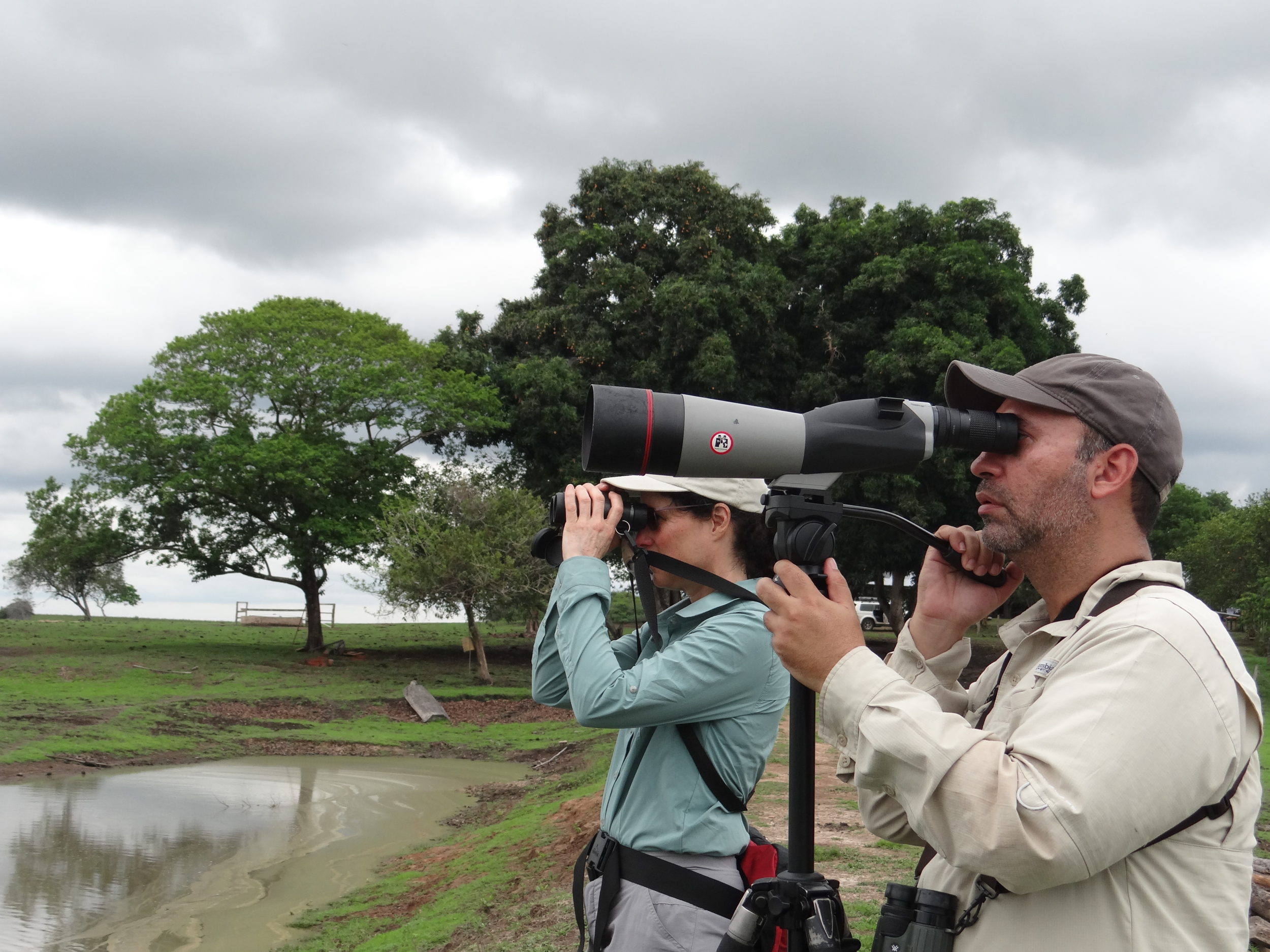
Rosalind Renfrew conducts an evening bird count before sunset with Carlos Ruiz of Asociación Calidris / © Yanira Cifientes
For three weeks, members of VCE partner Asociación Calidris showed me the ways (and the birds) of the Llanos grasslands in eastern Colombia. For generations, ranchlands have been shaping the landscape. The well-being of many migratory and resident bird species will depend on the conservation partnerships Calidris is building. Funding for my trip and much of the work with Colombian ranchers described in these blogs is provided by the Bobolink Foundation.
This is part two of a three-part series about this incredible shared learning experience. – Roz Renfrew
Keeping the Journey Safe for Migratory Grassland Birds
Those of a certain age may remember grim news emanating from Colombia about rampant violence due to a war between rebels and the government, coca production, and drug trafficking. For decades, visiting the country was strongly discouraged. Never in my wildest dreams would I have imagined finding myself giving a talk in eastern Colombia about a couple of migratory bird species.
With a signed peace agreement and coca production largely eradicated, Colombia has become safer for outsiders, with considerable implications—including wildlife conservation among the beneficiaries. Field research, international support, partnering, and even ecotourism are now feasible, allowing conservation initiatives to better take hold and advance.
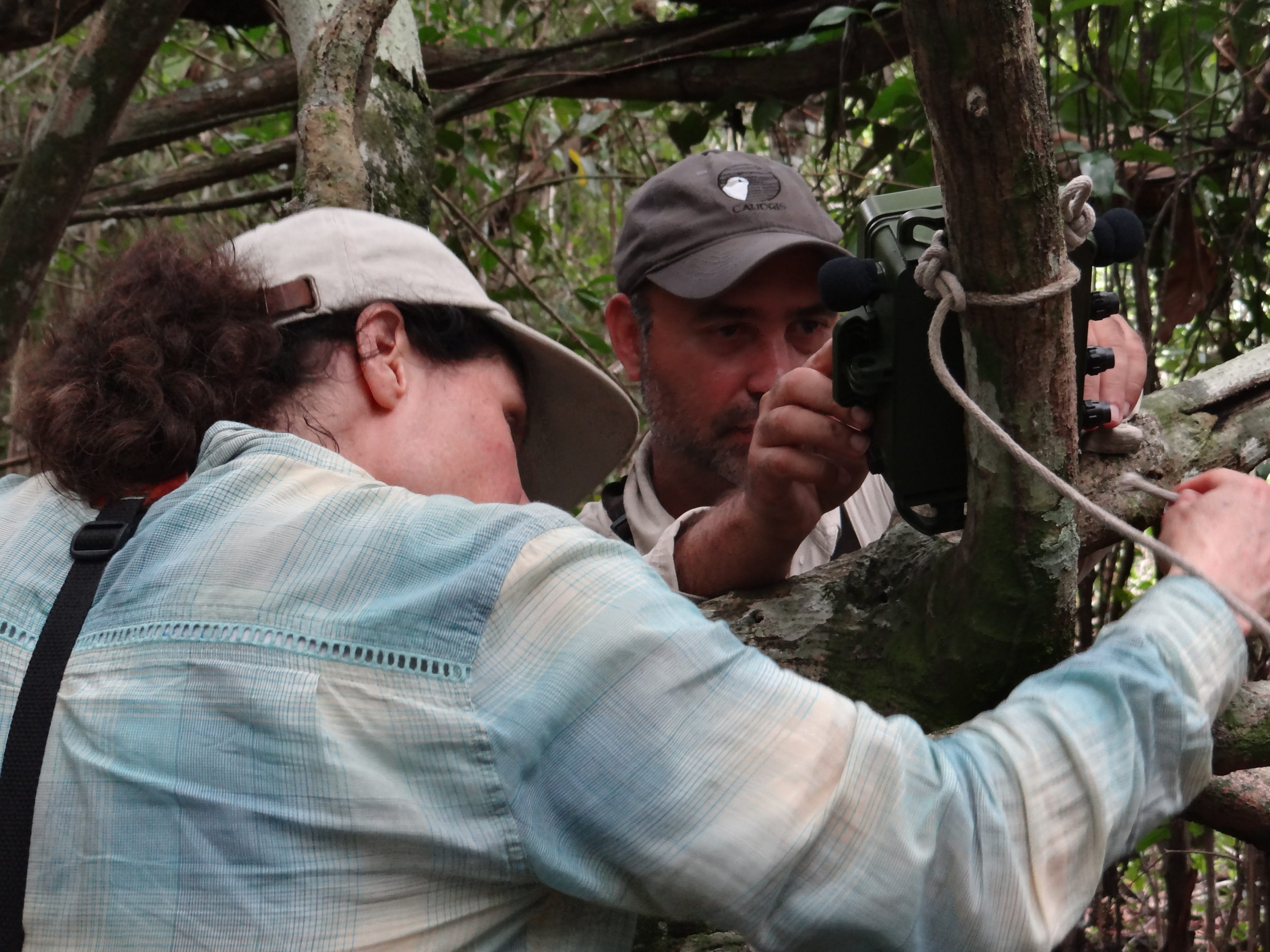
Rosalind Renfrew placing audio recorders with Carlos Ruiz to see what “night life” we might add to the list of bird species at the Reserves. © Yanira Cifuentes
Other implications that may be less intuitive present conservation challenges for migratory birds that breed in North America. The vast Llanos grasslands in eastern Colombia are increasingly subject to rapid land use change as large-scale agriculture takes advantage of the more business-friendly climate in the country. Grassland habitat loss increases as rice fields that provide important stopover habitat for migratory birds are replaced with ranchlands.
Carlos Ruiz and Yanira Cifuentes of Asociaciόn Calidris are tackling the problem from both ends by promoting beneficial management practices for rice production and on ranchlands (see Part I of this blog). The former entails outreach to producers, farm agencies, and the general public.

Native grasslands are being rapidly lost to rice production in eastern Colombia, and Carlos Ruiz (Asociación Calidris) is gravely concerned about the loss of grassland bird habitat. / © Rosalind Renfrew
This is where VCE comes in. We discovered that almost the entire Bobolink population stops in the Llanos on their way to and from their South America wintering grounds. The potential implications of the species’ known affinity towards rice becomes clear given VCE’s research in Bolivia showing they are a pest to rice producers, and the recent land use changes in the Colombia Llanos. Indeed, Carlos and Yanira found that Bobolinks and a similar grassland migratory species, Dickcissel, are known to eat rice just before harvest time. Dickcissels stay in the region the entire winter; therefore, as more pasture is plowed to make way for rice, farmers need to be prepared for more birds discovering the smorgasbord.
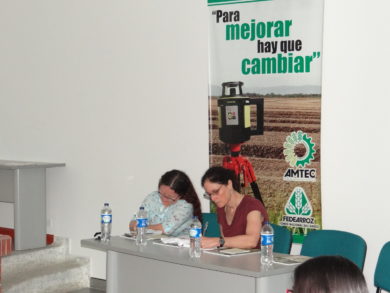
Yanira and Rosalind Renfrew as part of a panel in workshop sustainable management practices in rice. / © Carlos Ruiz
In an effort to discuss solutions before a clash between birds and rice producers develops, Calidris partnered with FEDEARROZ, a rice producer association, to host a forum with agronomists about management options to control birds and insects. To advertise the forum, we dedicated two days to radio and television interviews. The usual social media blasts were delivered as well, but in the small city of Yopal and its surrounding area, the internet is far from universally accessible, and most of the news is received the old fashioned way. The forum featured presentations ranging from the use of beneficial predator insects and pheromone traps to control insects, to my talk about harmless ways to control seed predation by birds. The underlying purpose was to promote alternatives to traditional, often intensive pesticide use. New ideas and even new collaborations emerged from the ensuing discussions among attending biologists, agronomists, and university students.
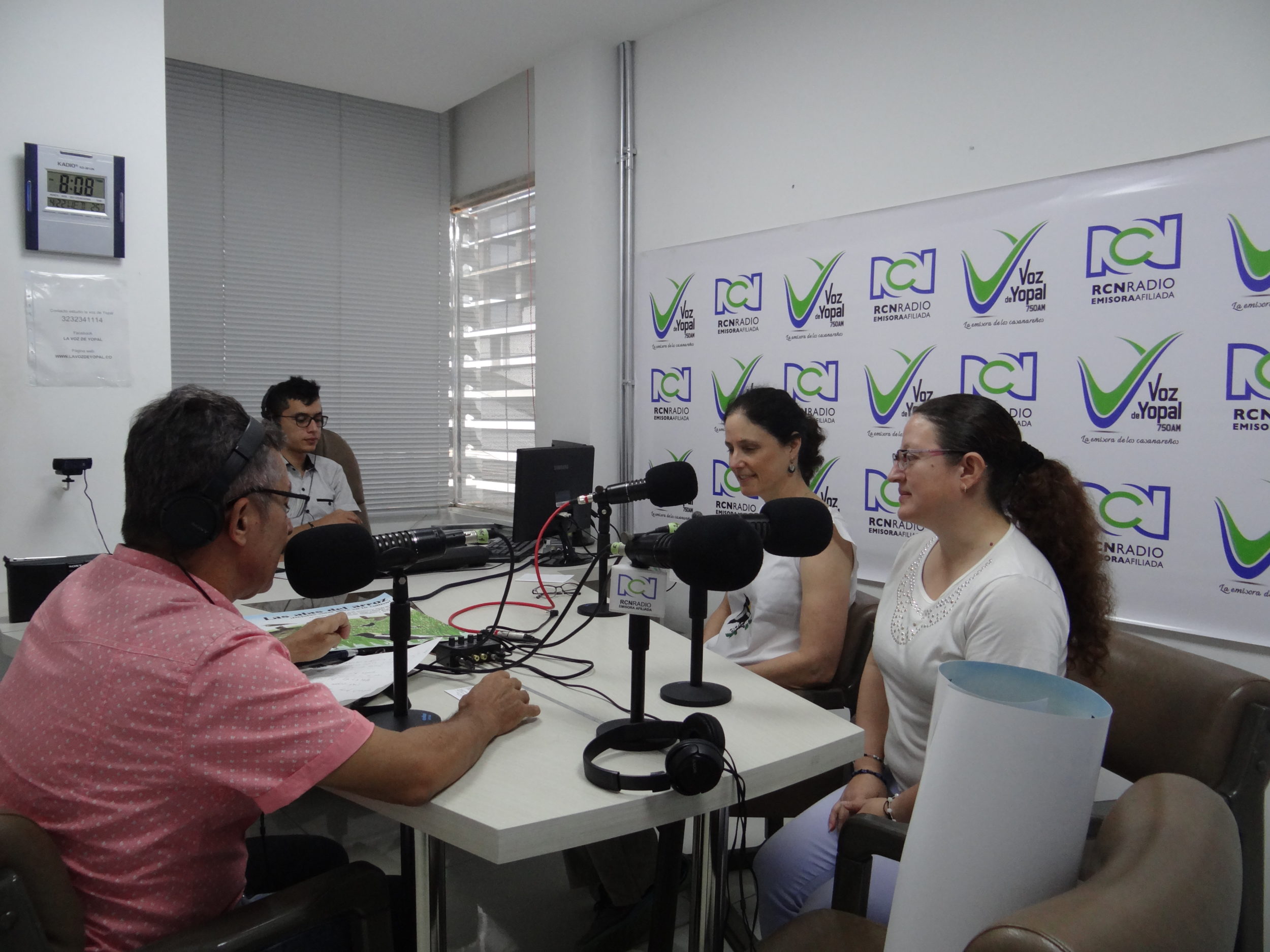
Yanira Cifuentes (Asociaciόn Calidris) and me in a radio interview talking about how management practices in rice fields have important implications for the bird community that use the fields. / © Carlos Ruiz
The Colombia Llanos is certainly far from home for those of us in the Northeast expecting Bobolinks to arrive soon for the summer. As abstract as it may seem, however, what happens here in Colombia can impact whether a bird arrives at all. When you have a “first sighting of the year” of a Bobolink, it can serve as a reminder of our partners in Colombia who are helping them along in their journey.
Coming Up Next
